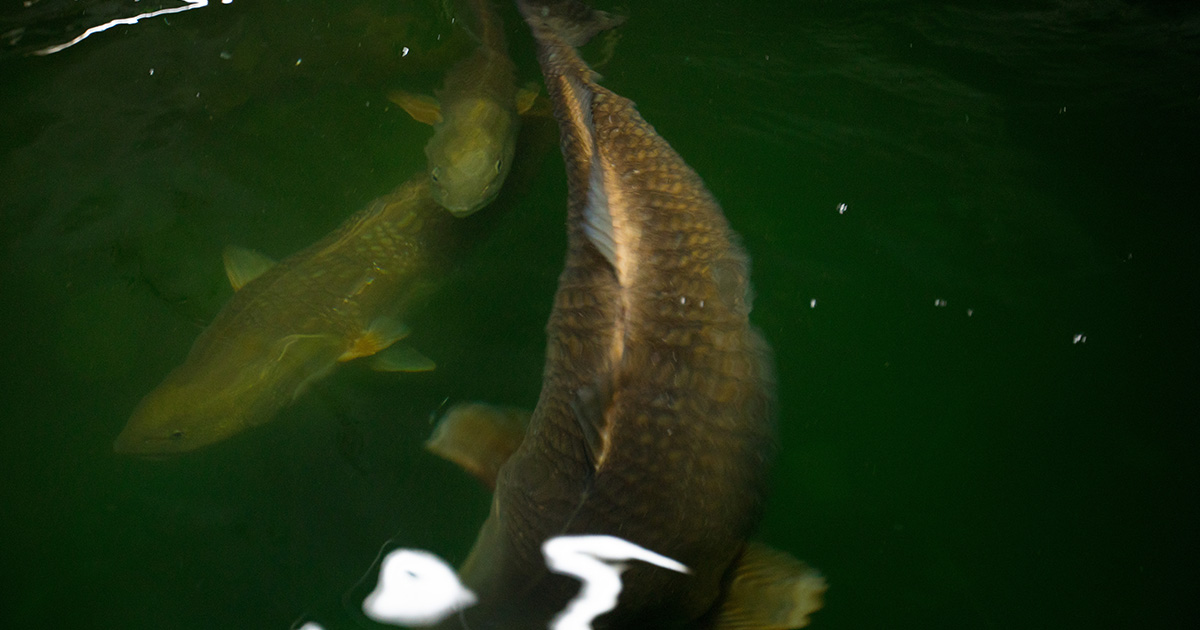With support from Salt Strong, Mote was able to produce and release its largest number of red drum yet with fish that tip the scales at 6-10” in length to boost survival of the stocked fish, enable monitoring their post-release behavior, and help promote sustainable fisheries.
When: At approximately 11:30. a.m., the red drum will be released at Phillippi Creek.
Where: Phillippi Creek is located at the end of Montclair Pl, Sarasota, FL 34231.
Who: Interviewees include:
- Dr. Ryan Schloesser Senior Scientist and Program Manager of Mote's Fisheries Ecology & Enhancement Research Program
- Dr. Nicole R. Rhody, Directorate of Fisheries & Aquaculture at Mote
RSVP required: Please email Olivia Cameron at This email address is being protected from spambots. You need JavaScript enabled to view it. or text or call (941) 724-6509
More details:
Mote’s Aquaculture and Fisheries Ecology & Enhancement Programs worked together to successfully raise 20,000 red drum fish—and plan to release all the fish in Sarasota and Charlotte counties this month with the goal of replenishing red drum populations that have been negatively affected by events such as cold stuns and Florida red tide. This effort represents the largest number of red drum produced in the program’s 25-year history for the purpose of fisheries conservation efforts.
On June 22 Mote Marine Laboratory scientists will have released approximately 4,000 of the 20,000 red drum into Phillippi Creek on Sarasota Bay as part of an ongoing partnership with Salt Strong designed to find the most effective methods to replenish and enhance red drum populations. The rest of the fish will be released later this month.
With support from Salt Strong*, Mote was able to produce and release its largest number of red drum yet with fish that tip the scales at 6–10” in length to boost survival of the stocked fish, enable monitoring their post-release behavior, and help promote sustainable fisheries.
The species is one of Florida’s most popular sport fish and plays an important role in drawing recreational anglers to the state. According to the Florida Fish and Wildlife Conservation Commission, Florida is the top-ranked state in economic output from recreational fishing, which draws $13.8 billion to the economy annually. Saltwater fishing alone generates 67 percent—$9.2 billion—of that income.
Prior to the release in Southwest Florida, the red drum were spawned and reared at Mote’s Aquaculture Research Park (MAP)—a 200-acre facility where a team of scientists focus on conservation and cultivation of marine finfish, bivalves, crustaceans, and aquatic plants in land-based recirculating systems.
 Mote's Aquaculture Research Park. (Image credit: Mote)
Mote's Aquaculture Research Park. (Image credit: Mote)
Aquaculture involves breeding, raising, and harvesting aquatic organisms in water. These aquatic organisms–including finfish, bivalve shellfish, shrimp, and other invertebrates, and aquatic plants are farmed for the ornamental aquarium trade, food, conservation, and other uses. Aquaculture is currently the fastest-growing food production sector globally and a sustainable option for attaining food security.
By utilizing a method called stock enhancement, researchers are able to farm fish species, such as red drum, in a hatchery and release them in areas where their population has declined.
Prior to release, these red drum will be fitted with PIT (passive integrated transponder) tags, which allow Mote scientists to monitor these fish to learn from their efforts. By placing an antenna along the shore, each PIT tag is detected when a fish swims by, allowing Mote scientists to monitor each fish’s movement and survival, and collect data critical to the effectiveness of Mote’s stock enhancement methods.
Red drum, along with snook, are the main test species for restocking efforts statewide. Mote has promoted responsible fisheries enhancement of snook in partnership with the Florida Fish and Wildlife Conservation Commission for more than 25 years.



